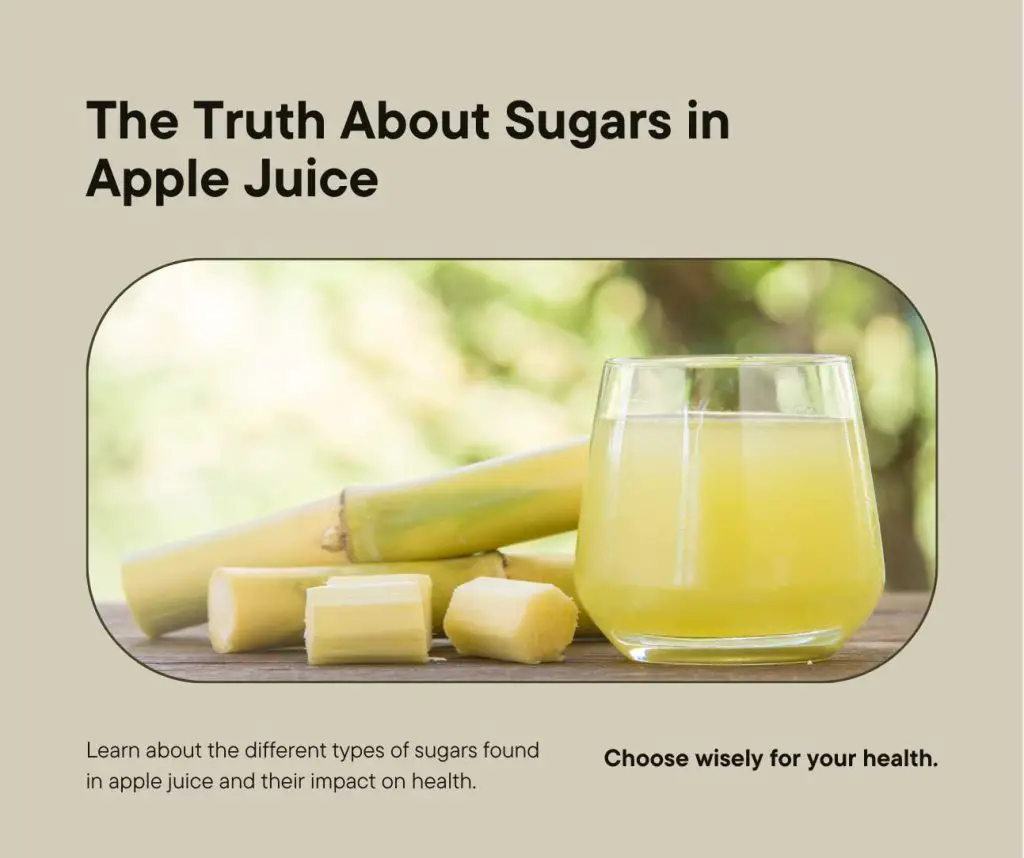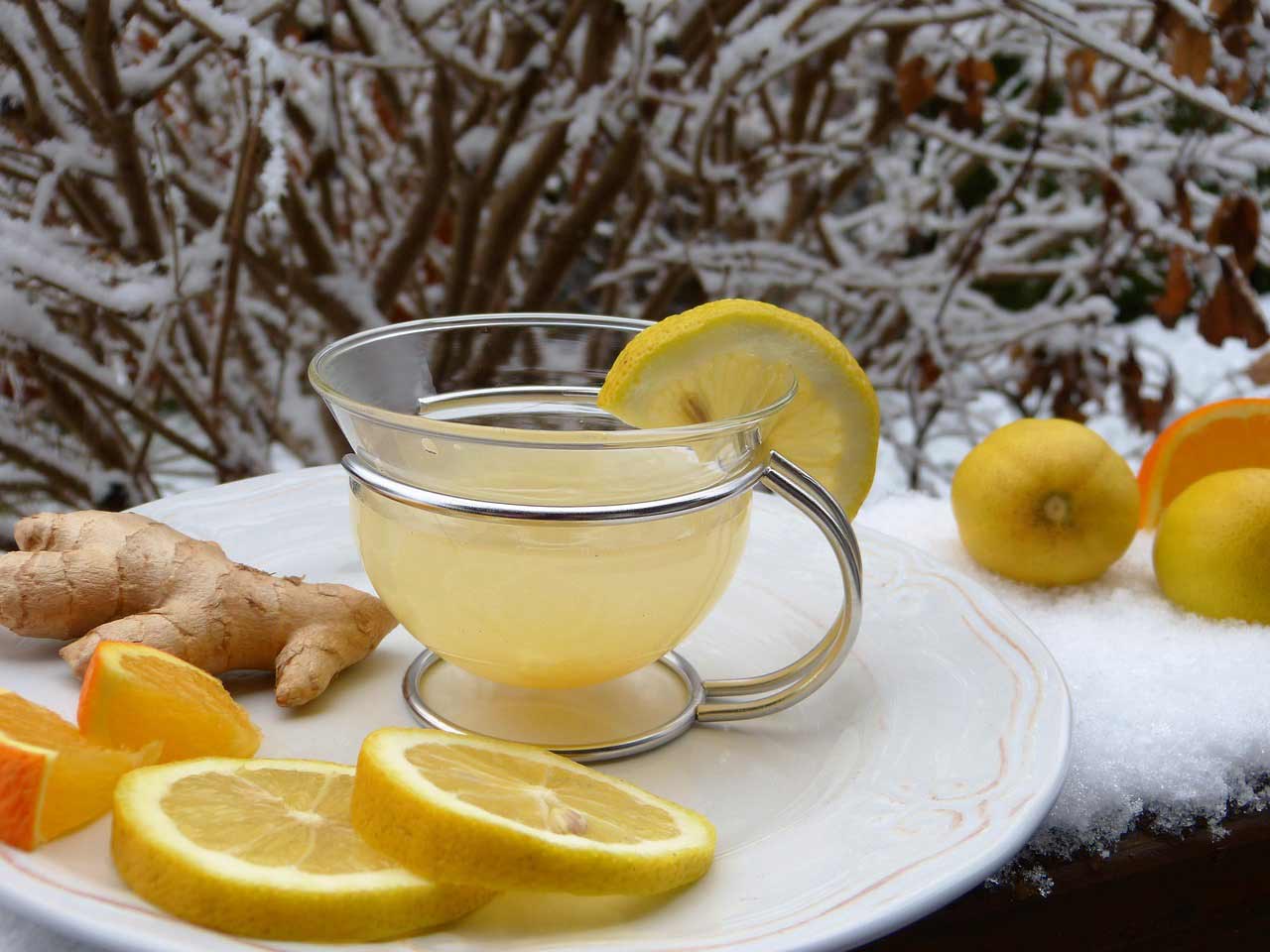Frequently questioned about its sugar content is apple juice, a household mainstay and popular for its cool flavor. Making educated nutritional decisions requires knowledge of the sugars in apple juice.
Here, we go into great length about these sugars, their effects on health, and responsible apple juice consumption.
Breaking Down the Sugars in Apple Juice
When you pour yourself a glass of apple juice, you’re not only consuming a fruit-based beverage, but also consuming a significant amount of the naturally occurring sugars in apples.
Let’s examine the kinds of sugars in apple juice, where they come from, and what this means for your health and food choices.
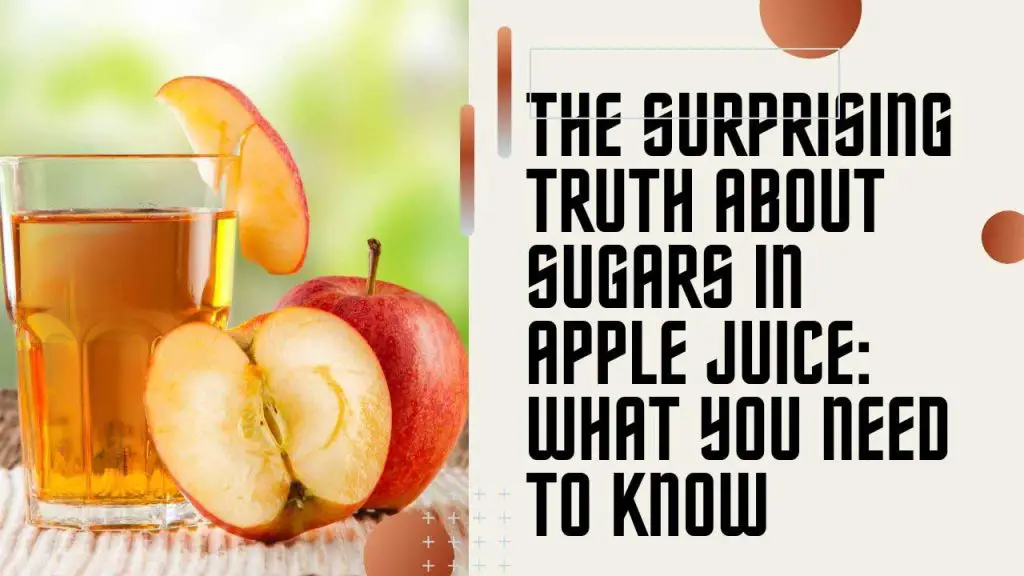
Natural Sugars in Apples
Apple juice mostly contains fructose, the natural sugar present in all fruits. This is what gives apple juice its taste—sweet and cool. Apples also contain lower levels of sucrose and glucose. Juicing removes most of the fiber from apples along with the sugars.
Impact of Processing on Sugar Content
| Type of Apple Juice | Description | Sugar Content |
|---|---|---|
| Freshly Squeezed | Made directly from apples without any additives. Contains only the natural sugars from the apples. | Only natural sugars; no added sugars. |
| Commercially Produced | Often made from concentrate and might include added sugars to enhance flavor and extend shelf life. | Higher sugar content; includes added sugars. |
| 100% Apple Juice | Indicates no additional ingredients other than apple, but can be from concentrate. | Varies; usually no added sugars, but check if reconstituted from concentrate. |
| No Added Sugar | No sugars are added during the processing. Contains only natural sugars found in the fruit. | Only natural sugars; no added sugars. |
| Made from Concentrate | Concentrated apple juice that’s been reconstituted by adding water, possibly with added sugars. | Natural sugars plus potential added sugars depending on the brand. |
Understanding the Labels
| Label Term | Meaning |
|---|---|
| 100% Apple Juice | Indicates that the juice is made entirely from apples, without additional sugars or other ingredients. |
| No Added Sugar | No extra sugars were added during processing. The only sugars present are those naturally occurring in the apples. |
| Made from Concentrate | The juice was originally concentrated (water removed), and then water was added back to reconstitute it. Additional sugars may have been added during this process, depending on the brand. |
| Organic Apple Juice | The juice is made from apples grown without synthetic pesticides or fertilizers. This label doesn’t necessarily comment on sugar content but focuses on the agricultural practices used. |
| Contains Added Flavors | Flavors other than apple have been added, which may include additional sugars or artificial flavorings. |
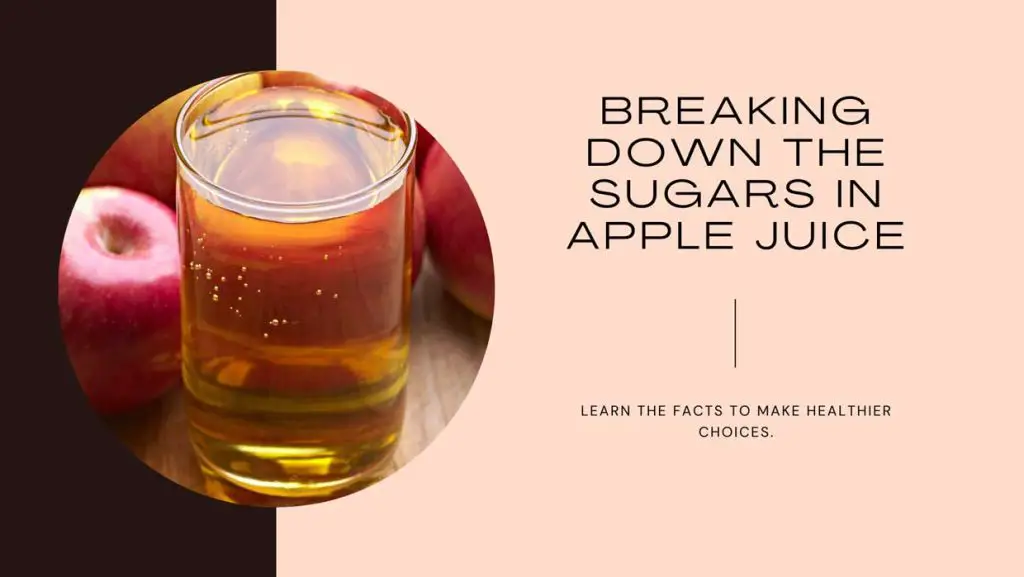
Health Implications of Sugars in Apple Juice: A Closer Look
Among the things that make apple juice so enticing is its inherent sweetness. Still, a lot of this sweetness comes from fructose, a kind of sugar present in fruits.
Although most people can safely consume fructose in small amounts, overindulging in it—especially from processed foods and drinks like apple juices—can have a number of health risks. Knowing these consequences can lead to more sensible food decisions.
Weight Gain and Obesity
Regularly drinking high-sugar beverages—such as apple juice with added sugars—has been associated with consuming more calories.
Because liquids don’t provide the same sense of fullness as solid foods, it’s easy to overindulge in calories from drinks alone, which can lead to obesity and weight gain. This is especially worrying for kids, who may favor sugary drinks like apple juice over less sweet ones.
Impact on Blood Sugar and Insulin Resistance
Fructose metabolizes differently than other sugars. It is processed in the liver; overuse of it may cause liver overload.
This may result in greater triglyceride release into the bloodstream, which may exacerbate insulin resistance, a precursor to type 2 diabetes. Diabetic risk rises with the difficulty of controlling blood sugar levels as cells in your body become resistant to insulin.
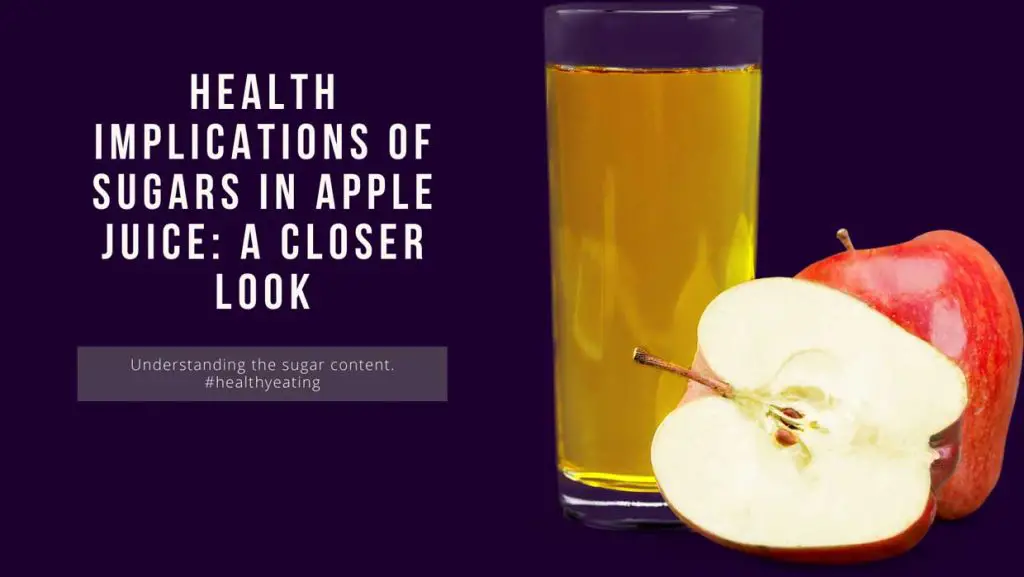
Dental Health Concerns
The sugars and acids in apple juice may also exacerbate tooth problems. Sugar-producing acid in the mouth feeds the bacteria that cause dental decay by eroding tooth enamel.
Although this is a common problem with a lot of sugary beverages, fruit juices—which many people believe to be healthy—are often disregarded.
Visit the AHA website to learn about recommended sugar intakes and the impact of sugar on heart health.
American Heart Association (AHA)
Tips for Choosing and Consuming Apple Juice Wisely
Making educated decisions about apple juice consumption can help you optimize its health advantages and reduce the negative effects related to its high sugar content. When selecting and sipping apple juice, consider this comprehensive advice:
Read the Labels Carefully
Reading the labels on the package should be the first step in selecting a healthy apple juice. Look for juices labeled “100% pure juice” without any added sugars.
This marking guarantees that the juice is created just from apples, free of additional sugars or additions that might greatly raise the sugar content. In order to monitor your consumption, also look up the amount of sugar per serving in the nutritional information.
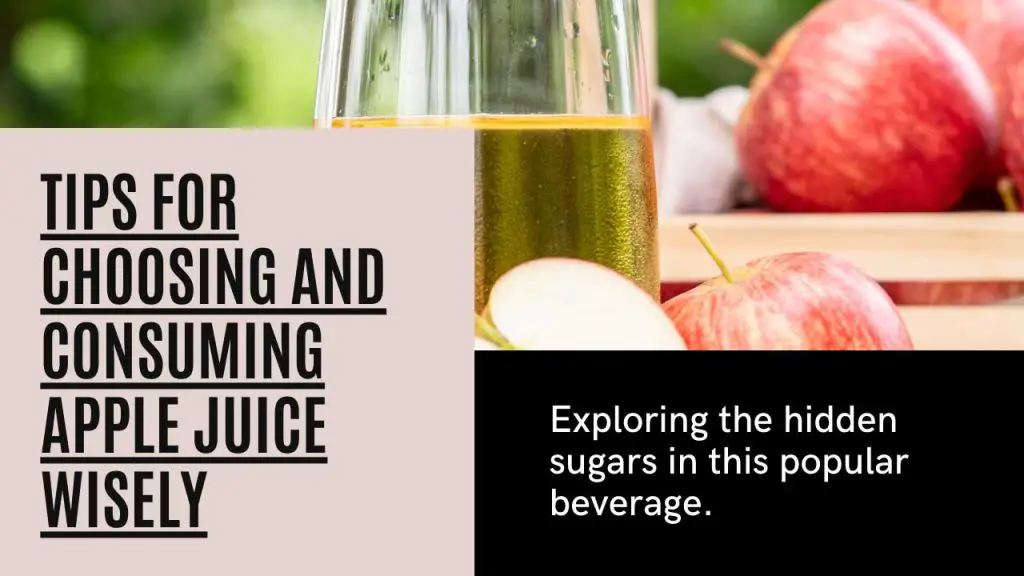
Opt for Organic and Unfiltered Options
Grown without synthetic fertilizers or pesticides, apples used to make organic apple juice may lower your exposure to harmful substances.
Known by its other name, “cloudy apple juice,” unfiltered apple juice has more of the apple’s natural fibers and may be more nutritious than filtered, clear apple juice. Because they slow down sugar absorption, these fibers can lessen their effect on blood sugar levels.
Dilute with Water to Reduce Sugar Intake
If you like apple juice but would like to cut back on the sugar, think about diluting it with water. For a much reduced sugar content per serving, combine half apple juice and half water. Children especially benefit from this approach because they may not require the full sweetness of undiluted juice, but they still like the taste.
Control Portion Sizes
Large quantities of juice allow you to quickly ingest a lot of sugar. Portion control allows you to enjoy apple juice without overdosing on sugar. Instead of a large drink, go for a little glass (four to six ounces). In this way, you can enjoy the taste and the juice’s advantages without going overboard on the sugar.
Conclusion
While apple juice offers various nutritional benefits such as vitamins and hydration, it’s crucial to use it responsibly to avoid the risks of excessive sugar intake.
With the proper product selection, label reading, portion management, and smart consumption techniques, you may enjoy apple juice as a component of a balanced, healthy diet. Remember these tips to make wise decisions that promote your general health and wellbeing.

Je m’appelle Gunther Adam et je suis ravi de partager avec vous le monde des saveurs vibrantes, de la vie saine et de l’art du goût. Learn More

